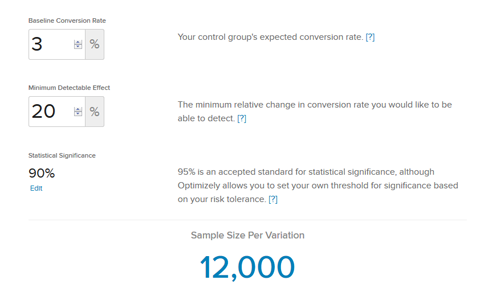Here's How to Start Testing Website Elements

Popular advice for those working on the Web is to "test that."
Whether it's a call-to-action (CTA), content or colors, there are plenty of website elements to test in order to maximize results. Many Web professionals, however, don't know where to start. Here is a seven-point checklist to help enterprises of any size and type begin optimizing their digital properties one element at a time.
Understand What Is/Isn't Working
It's important that those individuals responsible for finding testing "moments" are the type of people who can dig into their analytics to identify problems or areas of opportunity - some of which their peers may not have even recognized (discover the personality traits of top optimizers in our upcoming April issue or get a preview here).
While analytics will tell a lot of a website's story in terms of where people are spending time, where they are leaving, what elements are moving them to purchase and other important metrics, qualitative insights should not be overlooked. For instance, brand complaints on social media, customer inquiries and surveys can all provide suggestions on what to test if analyzed with an open mind.
Assign Roles
Part of the reason testing projects never get off the ground is because they often take multiple people who are in multiple departments to fully complete. After identifying elements to test, enterprises need to get buy-in to use different staff members for the initiative. It's important to understand the scope that the project may entail (time, money, tools, etc.) to have the best chance of getting accurate results.
For example, if an optimizer for an ecommerce brand notices a significant drop off at "account registration" at checkout, a certain percentage of new users may want to be offered guest checkout to see if that increases conversions during a pre-set timeframe and at a time where other factors (e.g., promotions, holidays, etc.) won't alter the results.
Research Resources
It is definitely important to fully realize the amount of resources a testing campaign will take, but it's equally crucial to understand the resources available today, which could reduce or eliminate a lot of the costs involved (including team members' time). Before beginning to test website elements, take a look at agencies/consultants that do this work every day (the projected results might warrant their associated costs), as well as tools that simplify the process and even blogs that publish material about the endeavor.
When testing tools have been decided on, brands will also want to see what (if any) integrations with Google Analytics are available, as this will allow for more in-depth tracking and reporting.
Consider Size & Timing
As previously mentioned, enterprises will want to ensure that tests are run when the timing of them (date ranges) won't impact the results. Unless the test revolves around a holiday, promotion or other time an enterprise wants to specifically look at, brands should avoid any period of time when the results will be swayed in any way.
What's more, in order to achieve statistical significance, companies will need to understand how much of the audience needs to be reached before the test is considered complete. For conversion rate tests, Optimizely provides a nifty test sample size calculator.

Test
With a lot of the background work finished, brands will need to actually run the test, of course. During the testing period, no elements other than the one(s) being tested should be modified in any way, as this could change the results.
Track
A lot of enterprises are running simultaneous tests on their website (hopefully on unrelated elements) so they won't be able to (nor should they) monitor the results in real-time. What's great about many testing solutions is that they'll report the results at the end.
Even so, brands may want to consider checking in on tests at intervals (e.g., 25 percent, 50 percent, etc.) to record progress because an outlier may be spotted that is causing false results, or the tested elements may be neck-and-neck until the very end, etc. The point is to get progress reports to understand whether anything is influencing the results.
At test completion, it'll be important to glean insights from the test to share with team members whose job it may be to actually make the positive changes (hopefully they were brought in from the very beginning though).
Test Again
A digital enterprise will never run out of website elements to test. They should, however, make sure that they are using the right tools, timing the tests appropriately and tracking the results to tie the test with company goals (e.g. conversion).
Finally, it's important for companies to realize when testing isn't enough, and a possible redesign should be in their future - in which even more testing will be needed and more outside professionals may need to be consulted.











